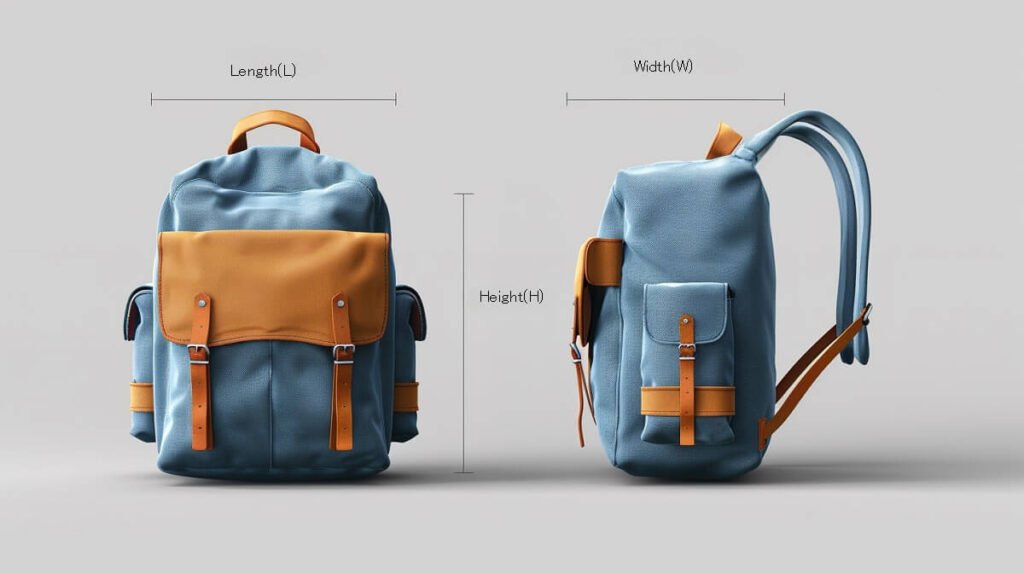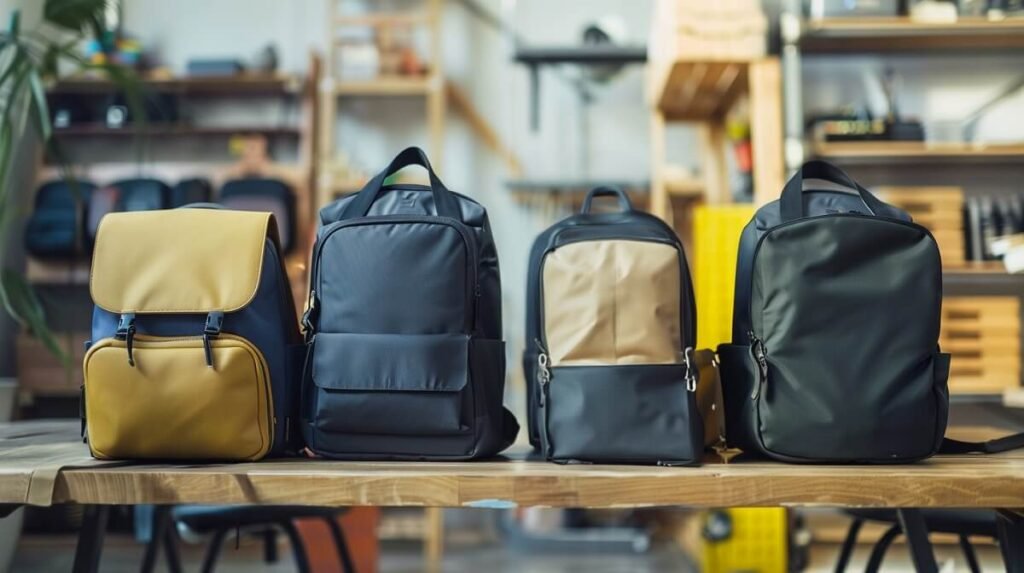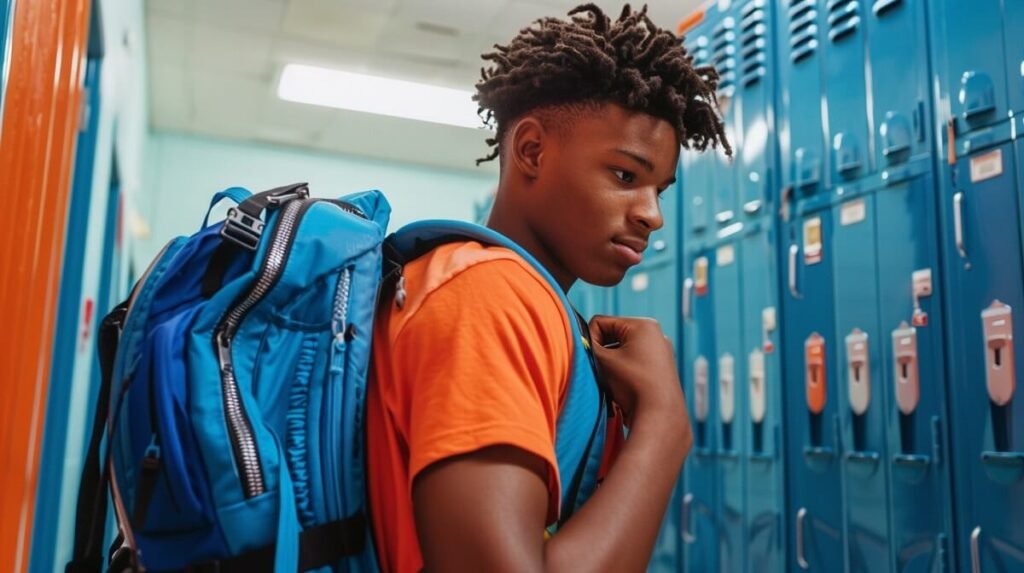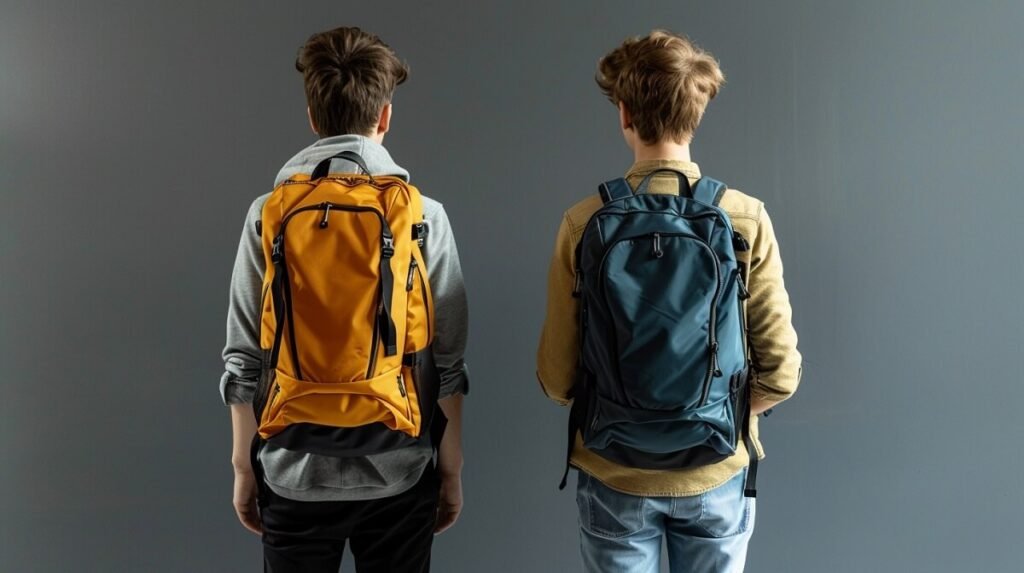Have you ever stood in the aisle of a store, surrounded by backpacks of every imaginable size and color, feeling utterly lost? I have. And let me tell you, it’s not just about the plethora of choices. It’s about finding that one backpack that feels like it was made just for you. As the CEO of Taknice, I’ve seen my fair share of backpack woes, and I’m here to help you navigate through this maze.
The crux of the matter is simple: the right backpack size is crucial to your comfort and success at school. But how do you find that perfect fit amidst a sea of options? Fear not, for I’m about to guide you through the essentials of choosing a backpack that not only carries your books but does so without breaking your back.
Now, let’s get down to brass tacks and explore the ins and outs of backpack sizes. Stay with me, and by the end of this journey, you’ll be equipped with all the knowledge you need to make an informed decision.
Understanding Backpack Sizes

Backpack sizes can seem like a mystery, right? But once you understand how they’re measured, you’ll see there’s method to the madness. Most backpacks are measured in liters, reflecting their capacity. This measurement gives you an idea of how much the backpack can hold, which is vital for planning your school day.
But here’s the kicker: it’s not just about volume. The dimensions of a backpack—its height, width, and depth—are equally important. These dimensions determine how the backpack will fit on your back, which is crucial for comfort and health.
Why Is the Right Size Important?

You might wonder why all this fuss about backpack size. Well, it’s about more than just fitting all your textbooks and a laptop. A backpack that’s too large can be just as uncomfortable as one that’s too small, leading to strain on your shoulders and back. Moreover, the right size ensures that the weight is distributed evenly, reducing the risk of posture problems and discomfort.
This isn’t just about comfort; it’s about health. A well-sized backpack can prevent back pain and other issues that could distract you from your studies or, worse, lead to long-term health problems. So, taking the time to choose the right size is not just practical; it’s a matter of looking after your well-being.
To help you further, here’s a quick guide to choosing the right backpack size based on age and educational stage:
| Age | Recommended Backpack Width (inches) | Recommended Backpack Height (inches) | Capacity (Liters) | Recommended Backpack Width (inches) |
| 4-5 | 6 – 6.5 | 11 – 12 | Up to 15L | Kindergarten |
| 6-7 | 7 | 14 – 15 | Up to 20L | Early Elementary |
| 8-10 | 7.5 – 8 | 14 – 15 | 20L – 25L | Mid to Late Elementary |
| 11-13 | 8 – 8.5 | 15.5 – 16.5 | 25L – 35L | Middle School |
| 14+ | 9 – 9.5 | 17 – 19 | 35L+ | High School and Beyond |
Now, let’s dive into the specific features to look for in a school backpack that not only meets your size needs but also provides the best support and functionality.
The Essential Factors
When choosing a backpack size, the decision shouldn’t be made on a whim. Several factors play a pivotal role in finding your ideal match. First, consider the volume. This isn’t just about how many books you can cram into the backpack but about how the weight is distributed once it’s on your shoulders. A backpack that’s too small becomes a black hole for your belongings, while one that’s too large may tempt you to carry more than necessary, leading to back pain.

Next, think about the backpack’s dimensions in relation to your body size. This is where things get personal. A backpack should align with the length of your torso, not hanging too low or riding too high. The width should complement your body, ensuring that the load is centered and not pulling you backward.
But how does one’s body size influence this choice? It’s all about proportion and balance. A tall person with a long torso will need a backpack that can accommodate this, ensuring the weight is evenly distributed across the back. Conversely, someone shorter or with a petite frame should look for a backpack that won’t overwhelm their stature, focusing on models designed to distribute weight efficiently without causing strain.
Types of School Needs

School needs are as varied as the subjects on your timetable. Let’s break it down:
The Minimalist: Some students prefer a streamlined approach, carrying only the essentials. For them, a compact backpack with a few compartments suffices, offering space for a laptop, a notebook, and a pen case.
The Tech-Savvy: For those whose school life revolves around technology, a backpack with a dedicated laptop compartment, protective padding, and extra pockets for gadgets is non-negotiable.
The All-Rounder: Then there are the students who prepare for every scenario. Their backpacks are akin to a mobile locker, with ample space for books, sports gear, and a change of clothes. For them, a larger backpack with multiple compartments and robust support is essential.
The Artist: Creative students often carry materials that are oddly shaped or delicate. A backpack with adjustable straps and compartments, along with a secure way to attach larger items like drawing boards, is ideal.
The Right Backpack for Different Age Groups

Elementary Students
For the younger scholars among us, backpacks need to be compact yet capable. A size that snugly fits an A4 notebook, a lunchbox, and a small water bottle is ideal. However, it’s not just about size; it’s also about ease of use. Zippers should be large and easy to handle, and pockets must be accessible. Reflective strips for safety during early morning and late afternoon are also a thoughtful addition.
High School and College Students
As students grow, so do their needs. High schoolers and college students require backpacks that can carry heavier books, technology like laptops or tablets, and perhaps even athletic gear for after-school activities. For these age groups, backpacks with a larger volume, ergonomic support to handle the added weight, and specialized compartments become indispensable.
Features to Look For

Choosing a backpack, regardless of age, calls for a keen eye on features that matter:
Ergonomic Design: A must-have to ensure comfort and prevent strain or injury. Look for padded shoulder straps, a padded back, and, if possible, a waist strap to help distribute weight more evenly.
Compartmentalization: Organization is key. Multiple compartments help distribute weight and keep items accessible. Specialized pockets for laptops or tablets, equipped with padding for protection, are increasingly important for high school and college students.
Durability: High-quality materials that can withstand the rigors of daily use are non-negotiable. Water-resistant fabrics add an extra layer of practicality for those unexpected downpours.
Adjustability: Backpacks that grow with you, offering adjustable straps and expandable compartments, offer the best long-term value.
Style and Personal Expression: Last but certainly not least, backpacks are a form of personal expression. They should resonate with the student’s style and be something they’re proud to carry.
Practical Tips

How to Test if a Backpack is the Right Size?
Finding the right fit starts with understanding your body and your needs. When trying on backpacks, make sure the bottom of the backpack aligns with your waist. A good rule of thumb is that it should not hang more than four inches below your waistline. Pack it with a reasonable amount of weight (think a couple of textbooks, a laptop, and other essentials), and walk around. Pay attention to how it feels on your shoulders and back. Are the straps digging in? Is the weight evenly distributed? Adjust the straps to see if you can find a comfortable fit. Remember, comfort is key.
Adjusting Your Backpack for Maximum Comfort
Once you’ve found a backpack that seems like a good fit, fine-tuning is crucial. Start with the straps.

They should allow the backpack to sit snugly against your back, with the weight evenly distributed across your shoulders. The chest and waist straps aren’t just for show; they help distribute weight and keep the backpack stable. Use them. Finally, regularly reassess how you pack your backpack. Keeping heavier items close to your back and distributing the weight evenly can prevent a lot of discomfort.
Case Studies
Let me share a couple of stories that highlight the transformative power of the right backpack.

Emma, a college freshman, struggled with back pain from carrying her heavy textbooks and laptop in a trendy but unsupportive backpack. Switching to a backpack with proper ergonomic support and a designated laptop compartment made her commutes pain-free and significantly improved her posture and focus during classes.
Then there’s Alex, a high school junior, who found that a backpack with multiple compartments not only helped him organize his school supplies but also encouraged him to pack only what was necessary, lightening his daily load and making his organizational skills the envy of his peers.
Conclusion
The journey to finding the perfect backpack is deeply personal and integral to your academic success and physical health. It’s not just about the color, style, or brand. It’s about how it fits, supports, and complements your daily life. The right backpack can make your school year significantly more comfortable and enjoyable. It’s worth investing the time to find it, adjust it, and make it yours. Remember, your backpack is more than just a bag—it’s your daily companion.
Transform your product range with Taknice’s superior student backpacks. For wholesale, retail, or brand collaboration opportunities, complete our quick contact form. Let’s partner to deliver excellence and functionality to your customers.

